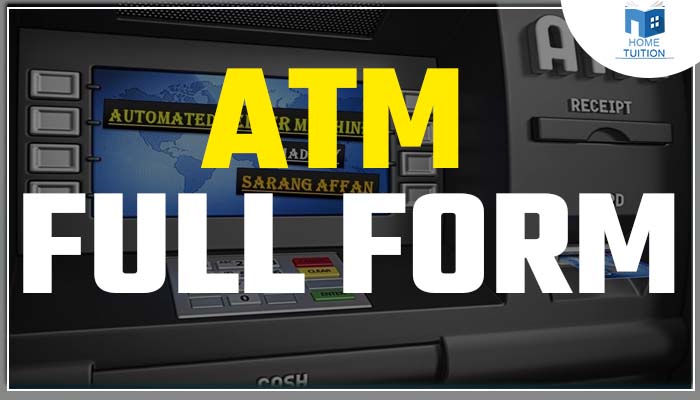Full form of ATM
The full form of an ATM is an Automated Teller Machine; it is an electromechanical machine that consists of automated banking platforms that allow clients to make smooth transactions without the assistance of a branch representative or teller. Debit or credit card holders should be able to withdraw cash at most ATMs.
ATMs that allow clients to perform quick self-service transactions such as cash withdrawals, deposits, bill payments, and account-to-account transfers are advantageous. Cash withdrawal fees are usually paid by the bank where the account is held, the ATM operator, or both. Few of these fees can be avoided by using an ATM operated directly by the bank that maintains the account.
ATMs are recognized as ABMs (Automated Bank Machines) in various parts of the world.
History of ATM
The first ATM appeared at a Barclays Bank branch in London in 1967, although there are records of an ATM in Japan from the mid-1960s. An interbank transaction allowed a customer to use one bank's card at another bank's ATM in the 1970s.
ATMs have spread worldwide within a few years and have established a foothold in every major country. They can now also be found in small island countries such as Kiribati. There are currently more than 3.5 million ATMs in operation worldwide.
Basic Parts of ATM
There are mainly two types of ATMs.
Basic units allow clients to withdraw cash and provide an updated account balance.
More sophisticated machines where you can also deposit cash, facilitate payments and credit line transfers, and access account information.
ATM is quite easy to use. It contains both input and output tools, allowing people to deposit or withdraw money conveniently. Below them are the ATM's primary output and input devices.

Input device of ATM
- Card reader: The card reader recognizes the card data stored on the ATM card in the back's magnetic strip. The account detail are collected by the card reader and then sent to the server when the card is inserted into the designated slot. Cash Dispensing allows cash to be dispensed based on account information and commands from the user's server.
- Keyboard: The keyboard helps the user with the required data from the machine, such as personal identification number, cash amount, receipt needed or not needed, and other information. The PIN is then sent to the server in encrypted form.
Output device of ATM
- Speaker: A speaker is available in the ATM to generate audio input when a button is pressed.
- Display Screen: Displays transaction details. It indicates the cash withdrawal steps, one after the other, in order. The screen can be CRT or LCD.
- Receipt Printer: A receipt displays information about the transactions printed on it. It informs you about the transaction's time and date, balance, withdrawal amount, etc.
- Cash Dispenser: A cash dispenser is the primary exit tool of an ATM that dispenses cash. The high-precision sensors in the ATM enable the ATM to manage the appropriate amount of money according to the consumer's needs.
Working Principle of ATM
To start the ATM, you need to insert plastic cards into the ATM. Some machines require you to drop your cards, and others require you to swipe your cards. These ATM cards contain your account details and other security information on a magnetic stripe. When you drop or swipe your card, the computer receives your account details and requests your PIN. Once the verification is valid, the machines will allow cash transactions.
Functions OF ATMs
- Deposit of cash
- Withdrawal of cash
- Transfer of cash
- Accounts details
- Mini statement
- Regular payment of the bill
- Account balance details
- Recharge of prepaid mobile
- Change the pin code
Advantages of ATM
- ATM gives service without any error.
- ATM service is available 24 ? 7.
- For travelers, ATMs are more valuable.
- It decreases the work pressure on bank staff.